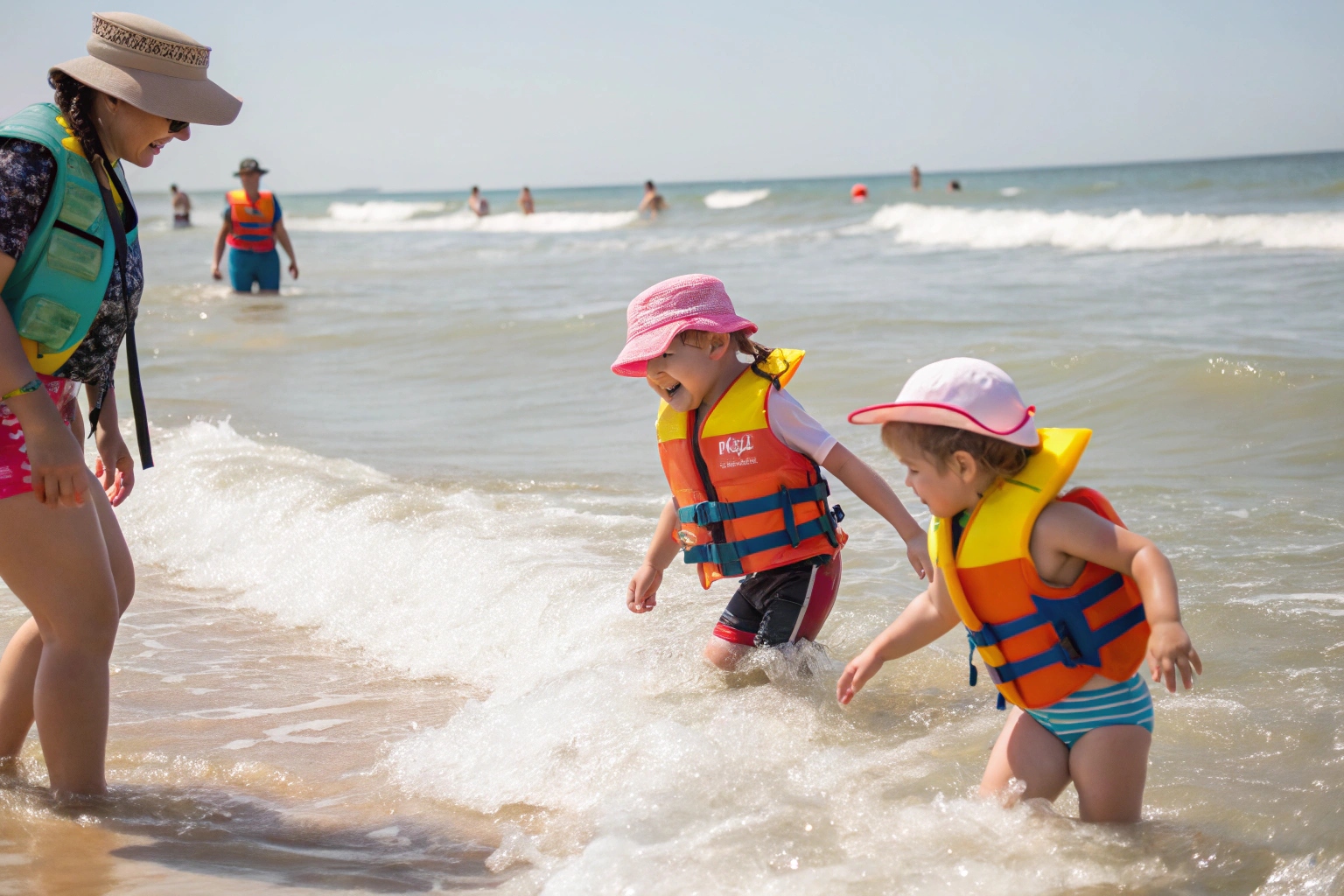Too many beach outings end in tragedy simply because one safety rule was ignored—wearing a life jacket.
A life jacket is a crucial piece of safety gear that can prevent drownings, especially for children, weak swimmers, and in unpredictable surf conditions. Even shallow water can become deadly without floatation support.
If you sell, source, or simply care about beach safety for kids, this article will help you understand why life jackets save lives, how to choose the right one, and what guidelines matter most.
Top Reasons Kids Should Wear Life Jackets at the Beach
Parents often believe “they’re just playing near the shore”—until something goes terribly wrong.
Life jackets help protect children from strong currents, sudden drop-offs, and waves that can knock them off their feet—even in shallow water.
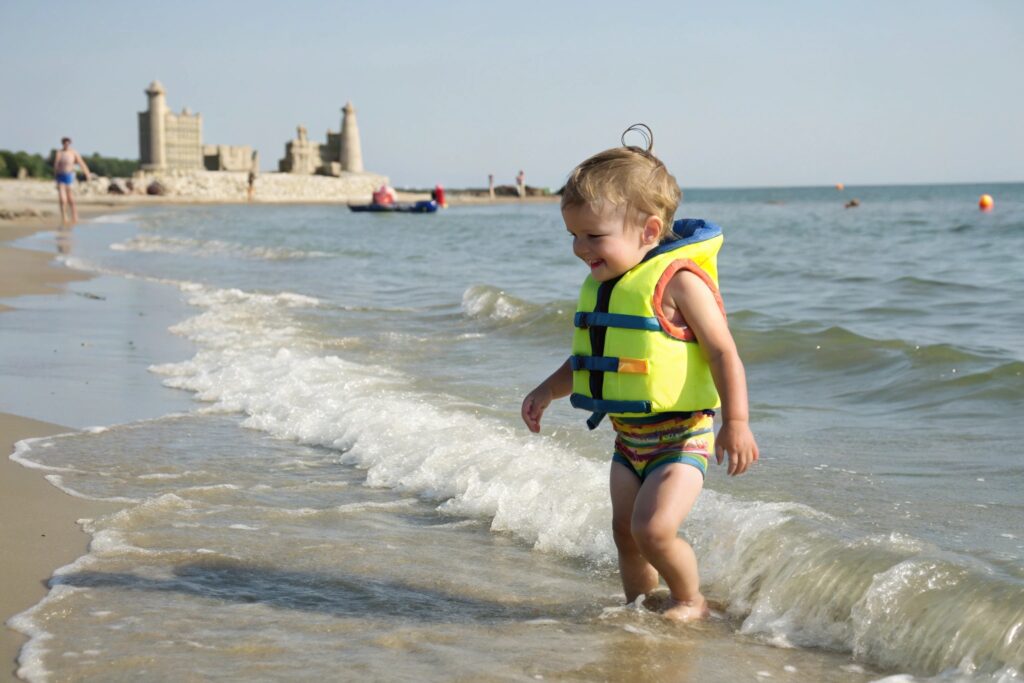
Why are beaches more dangerous than swimming pools, and how do life jackets reduce the risk?
Beaches are unpredictable. Tides shift. Currents change direction. Even strong kids can panic if they fall into deeper water. Unlike pools, beaches don’t have lifeguards everywhere, and the sand can slope dramatically.
Here’s what life jackets do:
- Keep heads above water, even if the child is unconscious
- Provide buoyancy during unexpected submersion
- Prevent fatigue in open-water swimming
- Buy time for rescue in emergencies
At Fumao Clothing, we began offering beachwear brands access to tested kids’ float vests after several clients requested gear that aligned with both style and strict safety standards. Style matters—but safety comes first.
What age group needs life jackets the most at beaches?
Children under 12 should always wear a USCG-approved life jacket at the beach, especially if they are:
- Non-swimmers or beginner swimmers
- Playing near or in the water unsupervised
- On floaties, paddleboards, or boats near shore
The earlier you start this habit, the easier it becomes for both kids and parents.
How Life Jackets Prevent Drowning in Open Water
A few seconds underwater is all it takes for a life to change forever.
Life jackets provide critical buoyancy and stability, keeping wearers afloat and visible even if they panic, faint, or get swept into deeper water.
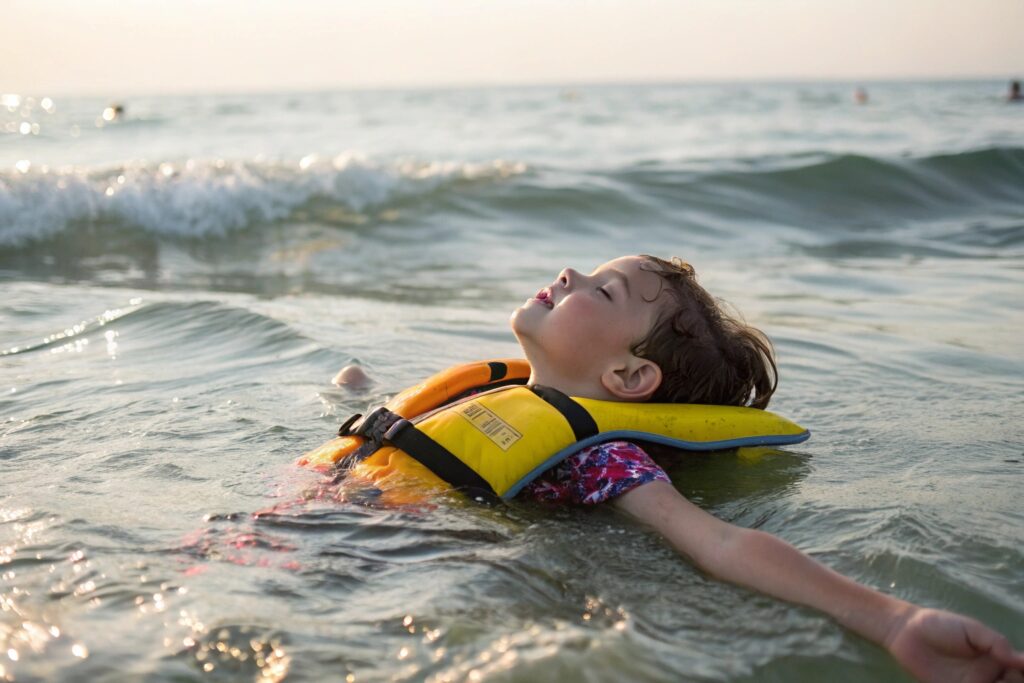
How exactly do life jackets reduce the chances of drowning in waves or strong currents?
Most drownings occur silently. There’s no dramatic flailing. A child steps off a sandbar, a wave hits, or a current drags them—and they go under. A life jacket:
- Keeps the airway above the surface
- Reduces struggle and panic by offering stability
- Gives rescuers more time to respond
- Enhances visibility with bright colors and reflective trim
We worked with one surf school in California that required life jackets during beginner lessons. Their accident rate dropped to zero after the change. It’s not about restricting fun—it’s about enabling it safely.
What are some real-world cases where life jackets saved children at the beach?
In 2023, a group of tourists in Florida was swept by a rip current. One child wearing a USCG Type III jacket was the only one not submerged. Rescue teams said it made the difference between search and rescue—and search and recovery.
A life jacket might look bulky. But in these moments, it becomes life-saving gear.
Coast Guard Safety Guidelines for Beach Floatation Gear
Not all floatation gear is created equal—some may look safe but are actually useless in real emergencies.
The U.S. Coast Guard only approves life jackets that meet rigorous safety, fit, and buoyancy standards—unlike inflatable toys or swim aids.
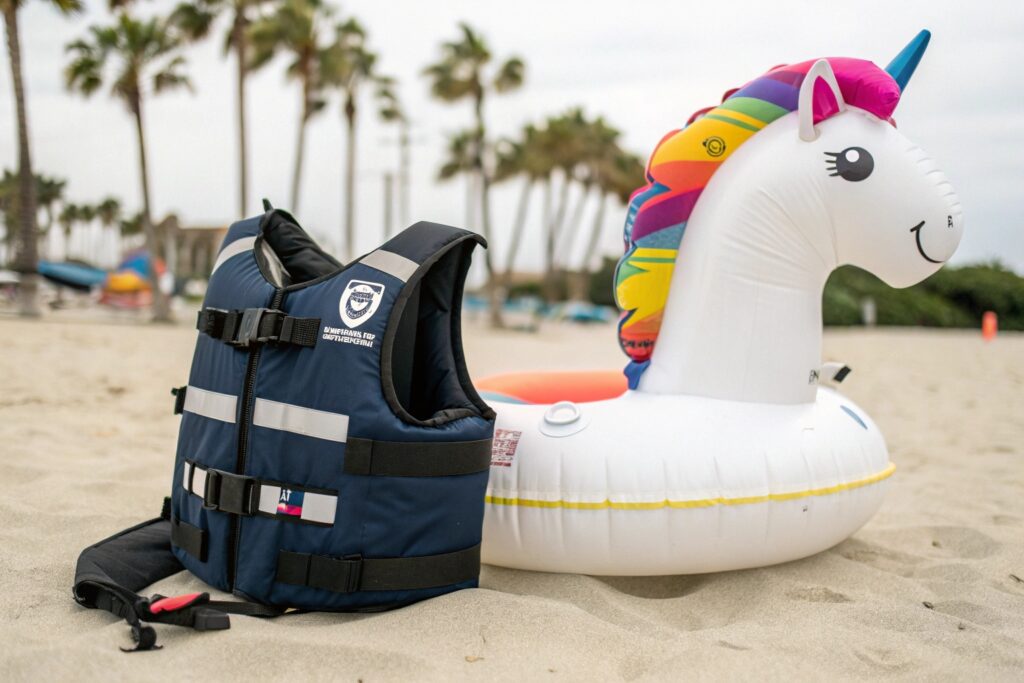
What are the main Coast Guard guidelines for children's life jackets?
According to the USCG, any life jacket for kids used in open water must:
- Be labeled “US Coast Guard Approved”
- Fit properly by weight and chest size
- Include crotch straps for smaller sizes to prevent slipping
- Provide at least 11 pounds of buoyancy for child sizes
- Feature head support for infants and toddlers
Avoid “puddle jumpers,” arm floaties, or unapproved vests for beach play—they can slip off or deflate, and they’re not considered safety devices.
What types of life jackets are recommended for different beach scenarios?
| Life Jacket Type | Description | Use Case |
|---|---|---|
| Type II | Turns unconscious wearer face-up | Good for younger kids and calm waters |
| Type III | Comfort-focused, keeps wearer upright | Ideal for active play near shore |
| Type V | Specialized use (kayaking, windsurfing) | For teens using watercraft |
At Fumao, we advise beachwear clients sourcing floatation gear to work only with suppliers certified by UL or SGS under USCG standards. Safety isn’t worth gambling with.
Choosing the Right Life Jacket Size for Children
A life jacket that doesn’t fit right can slip off—defeating the purpose entirely.
Choosing the right life jacket for kids involves more than just picking by age—weight, fit, and secure straps all matter.
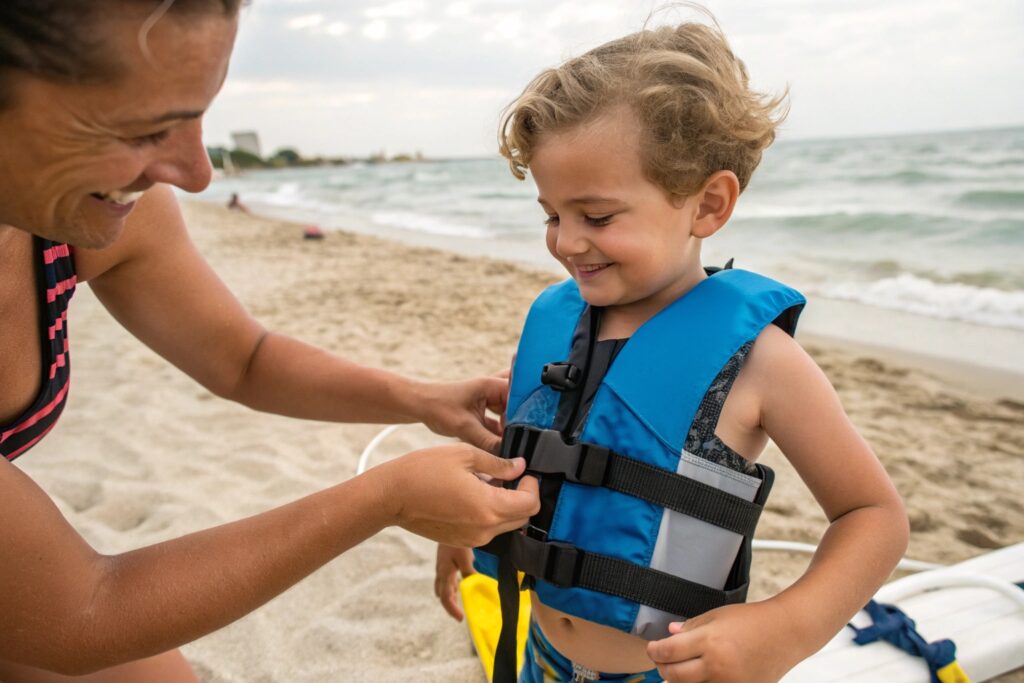
How can parents or brands determine the correct size of life jacket for children?
Sizing is typically based on body weight and chest size:
| Child's Weight | Recommended Size |
|---|---|
| 8–30 lbs | Infant |
| 30–50 lbs | Child |
| 50–90 lbs | Youth |
| 90+ lbs | Teen/Adult XS |
Look for:
- Snug fit without being tight
- Adjustable straps on shoulders and sides
- Crotch straps for young kids
- Test in water to ensure head stays above surface
One of our swimwear brand partners in Australia added life jacket fittings to every purchase. Not only did customer trust grow, but returns also dropped—parents knew they were getting the right size the first time.
What mistakes should brands avoid when selling or sourcing children’s life jackets?
- Using fashion over function: Color is great, but floatability is key.
- Ignoring certifications: Never assume “buoyant” equals “safe.”
- Skipping test fits: One-size-fits-all never works in real conditions.
At Fumao, we offer sourcing for USCG Type II/III-approved float vests with custom branding, reflective panels, and child-specific sizing. Helping your customers feel safe—and look good—is possible with the right approach.
Conclusion
A life jacket at the beach isn’t a restriction—it’s protection. Whether you're a parent or a brand, making safety the priority can turn a risky outing into a carefree experience that everyone enjoys.

